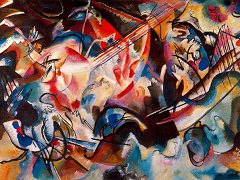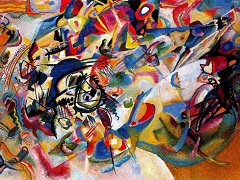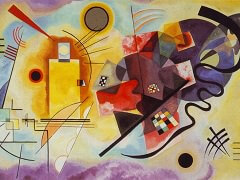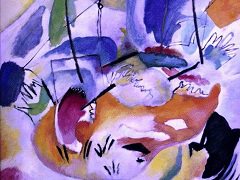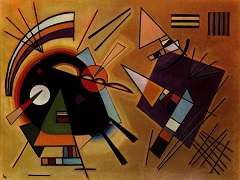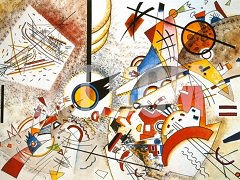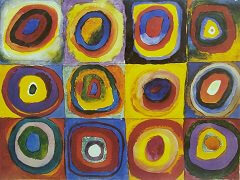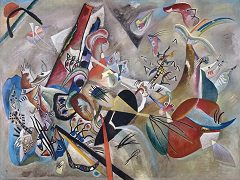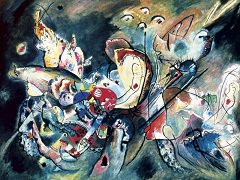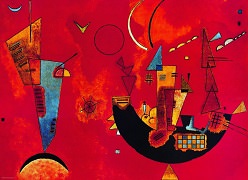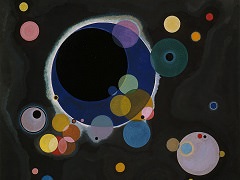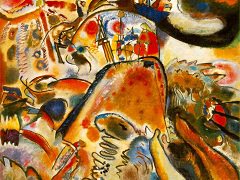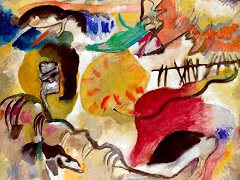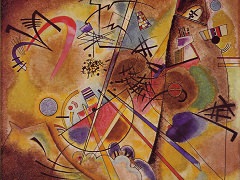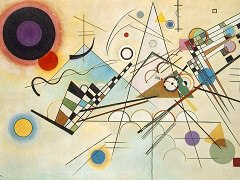Murnau Landscape with Church, 1909 by Wassily Kandinsky
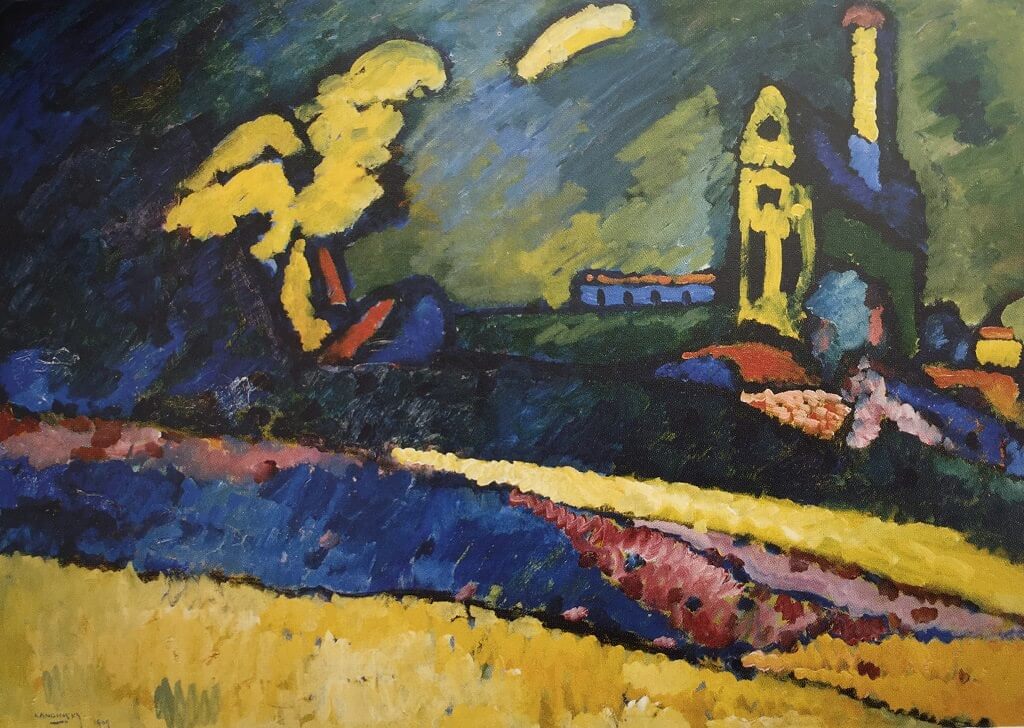
Kandinsky was brought up in the tradition of the Russian Orthodox Church, a faith that he maintained throughout his life, at least spiritually. Like many other open-minded people at the turn of the century he was also absorbing Theosophical ideas based on the teachings of Madame Blavatsky (1831-91) and Rudolph Steiner (1861-1925). Kankinsky's interest was noncommittal, but he shared, like many others in the wake of a burgeoning materialistic and self-centred world, a deeply held conviction that spirituality was most important if one were to discover one's own 'inner self. His interest in Theosophical teachings was cursory and stemmed from his relationship with Gabriele Munter and her interest in the subject, in which she was pursuing a pseudo-scientific, pseudo-philosophical vision of art. Nevertheless there are some aspects of Theosophy that Kandinsky absorbed, most notably the enigmatic qualities of colour and form, which for the Theosophists have the power to 'enrich the soul' through vibrations of psychic energy, in Kandinsky's parlance a 'Klang'.
Theosophical teachings did inform a number of avant-garde artists at this time, including Piet Mondrian, who was later to be influential to Kandinsky while at the Bauhaus,

